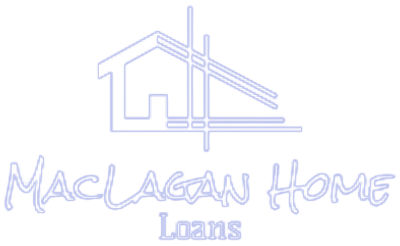Bank Statement Loans in Illinois
The perfect mortgage for self-employed buyers and homeowners looking to purchase or refinance in Illinois.
Answer a few simple questions in our 30-second mortgage survey. No credit check and your info is never sold


What are Bank Statement Loans
Bank statement loans are an ideal solution for borrowers who may not qualify for traditional mortgage loans (conventional mortgage, FHA loans, etc) such as self-employed borrowers (business owners and 1099 workers).
With bank statement loans also know as Self-Employed Loans, we evaluate your eligibility based on your bank account deposits rather than tax returns or pay stubs.
Typically as a business owner you take all of the tax deductions you can on your tax returns which lowers your gross monthly income and it disqualifies you from traditional mortgages.
With bank statement loans we can drastically increase your gross monthly income since they average out your business related deposits over a 12 or 24 month period (in some cases 3 months) on your bank statements, then determine your average deposits and subtract your expense ratio to determine your gross monthly income.
What Do You Need To Qualify for a Bank Statement Loan
- Minimum 620 Credit Score
- Down payments as low as 10%
- Must be in business for at least 2 years
- Must have 12 or 24 Months of Personal or Business Bank Statements
- Must be at least a 25% owner of your business
- No history of foreclosure or bankruptcy over past 12 months
Who Are Bank Statement Loans for?
Bank Statement Loans are for any borrower who does not qualify for a Conventional Mortgage, FHA Loan, VA, USDA Loan, Jumbo Loan, etc and you are one of the following:
- Business Owners
- Freelancers
- Independent Contractors
- Sole Proprietors
- Gig Economy Workers
- Consultants
- Contract Worker
- Retirees
- Realtors
- Entrepreneurs
The Bank Statement Loan Process
Applying for a bank statement loan with us is simple. Either complete our Bank Statement Loan Qualifier online or schedule a fast consultation with me..
We work hard to provide pre-approvals within 24 business hours and can typically close loans within 21 days once approved.
To begin the pre-approval process, you will need to submit your bank statements, and ID. Feel free to reach out with any questions!

Do I Qualify For a Bank Statement Loan?
Qualify for your mortgage faster by avoiding the tax return amendment process.
Bank statement loans allow you to leverage consistent deposits and transaction history to get approved, with only slightly higher interest rates.
Take our quick pre-qualifier to see if this faster, more flexible option is right for your financing needs.
Get approved Quick & Easy!
Loans we offer
Your Home Loan Could Be Fully Funded 21 Days From Now Without Any Hassles!
Conventional Loans
A popular mortgage option for borrower’s with strong credit and stable income. Down payments as low as 3% and with competitive and adjustable rate options.
Read moreFHA Loans
A great mortgage option for first-time home buyers or those with limited funds. They have flexible credit requirements and offer down payments as low as 3.5%.
Read moreVA Loans
The best loan option for eligible military veterans and active duty service members. 100% financing and no mortgage insurance.
Read moreJumbo Loans
A great mortgage option for borrower’s looking to finance a home that exceeds conventional loan limits. Down payments as low as 10%.
Read moreDSCR Loans
Rental property loans that require no income or employment verification. The best loan for real estate investors and landlords
Read moreFix & Flip Loans
The perfect loan option for real estate investors who are looking to finance a property that needs renovation. Finance 100% of the renovation with down payments as low as 10% of the purchase price.
Read moreFAQ
How is income calculated on a bank statement loan?
Income calculation for bank statement loans varies by lender but follows general industry standards. Typically, we review 12 or 24 months of your bank statements to establish consistent income patterns. For business owners using business bank statements, we calculate the total deposits, remove any non-income deposits (like transfers, loan proceeds, or personal funds), and then apply an expense ratio between 25-50% depending on your industry.
For personal bank statements, we identify regular deposits, exclude non-income items, and apply a lower expense ratio (typically 10-20%). Some programs allow you to provide a profit and loss statement to potentially use a more favorable expense ratio.
At MacLagan Home Loans, we’re experts at analyzing your bank statements to maximize your qualifying income while staying within responsible lending guidelines.
What are the negatives of a bank statement loan?
When considering a bank statement loan, it’s important to understand the potential drawbacks:
- Higher costs: Interest rates typically range from 0.5% to 2% above conventional rates, with additional loan fees
- Larger down payments: Expect to need at least 10-20% down, compared to as little as 3% for some conventional loans
- Stricter reserve requirements: Most lenders require 6-12 months of mortgage payments in reserves Limited loan options:
- Fewer lenders offer these programs, potentially limiting your choices
- The specialized underwriting often takes longer than conventional loan approval More restrictive property guidelines:
- Some property types may be excluded or have additional limitations
Despite these considerations, bank statement loans remain an excellent solution for many self-employed borrowers. At MacLagan Home Loans, we specialize in these loan programs and can help you navigate the complexities to determine if the benefits outweigh the drawbacks for your specific situation. Many of our clients find that qualifying based on their actual cash flow is worth the additional costs and requirements.
Are bank statement loans hard to get?
Bank statement loans are not necessarily harder to get than a conventional loan but they are different. The most important aspect of a bank statement loan is to make sure the correct deposits and expense factor is being used.
The rest of the bank statement loan is very similar to a conventional loan for the rest.
At MacLagan Home Loans, we have had so many borrowers come to us when other lenders fail to calculate their monthly income on a bank statement loan incorrectly.
Do bank statement loans require mortgage insurance?
Unlike conventional loans when you make a down payment of less than 20%, bank statement loan programs don’t require separate mortgage insurance premiums. This doesn’t mean they’re less expensive overall. These loan types have higher interest rates than conventional loans instead of requiring mortgage insurance.
For example, while you might avoid the 0.5-1.0% annual mortgage insurance premium typical of low-down-payment conventional loans, your interest rate might be 0.5-1.5% higher. This structure can benefit some borrowers by potentially making the interest fully tax-deductible (unlike mortgage insurance), though you should consult your tax advisor about your specific situation.
How much money do you need for a bank statement loan?
The funds needed for a bank statement loan depend on several factors including your credit profile, the property type, and loan amount. For most bank statement loans, you should prepare for:
- Down payment: 10% to 20% of the purchase price
- Closing costs: Usually 2% to 5% of the loan amount
- Cash Reserves: Most of the lenders we are partnered with require 6 months of mortgage payment reserves.
Unlike some traditional loans, bank statement loans generally don’t offer 3% down payment options. However, at MacLagan Home Loans, we’ve curated relationships with lenders who offer competitive bank statement programs with down payments as low as 10% for well-qualified borrowers. Additionally, we have options for borrowers with varying levels of cash reserves. The best approach is to contact us for a confidential consultation to explore the specific requirements based on your unique financial situation.

